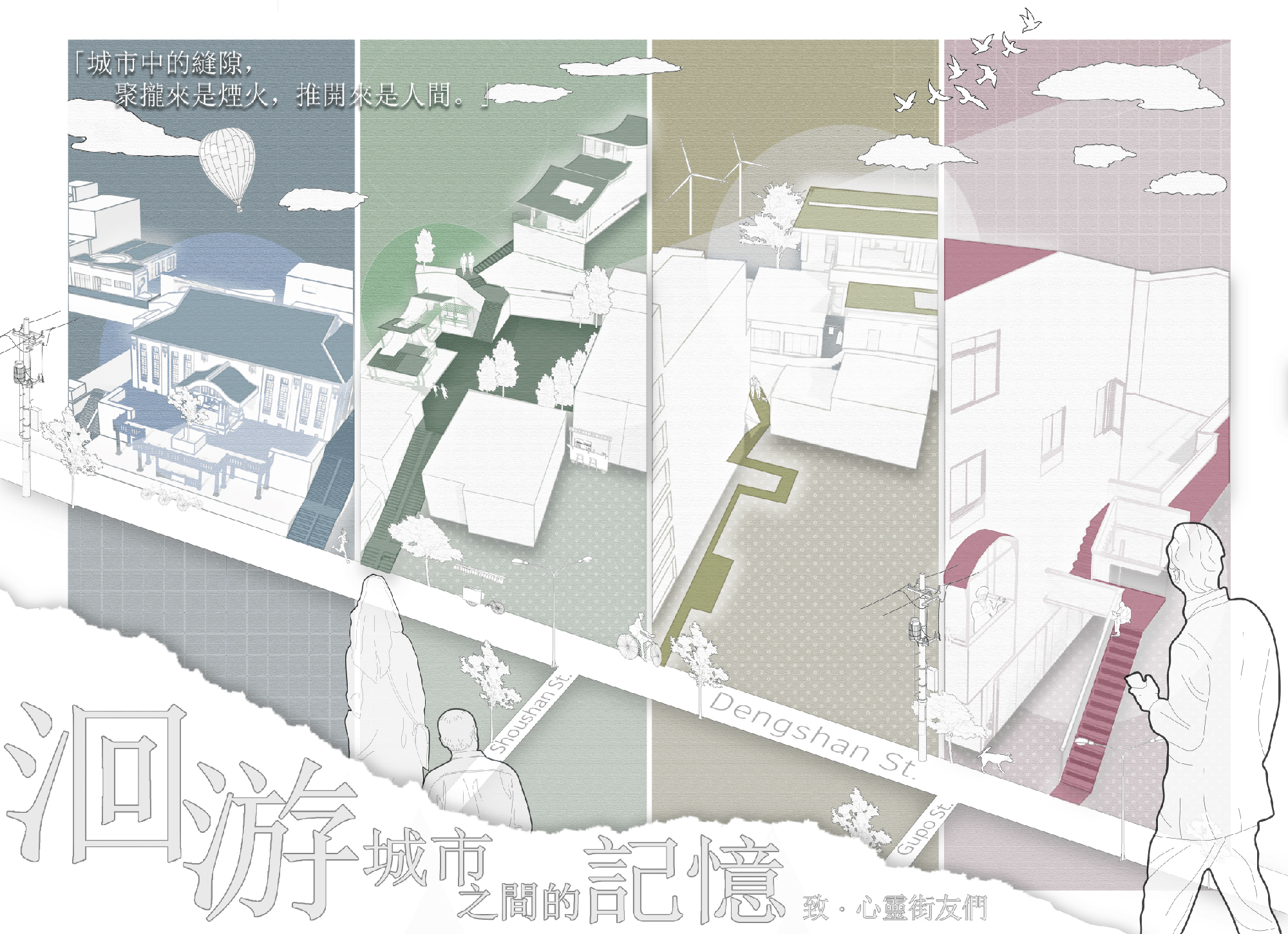
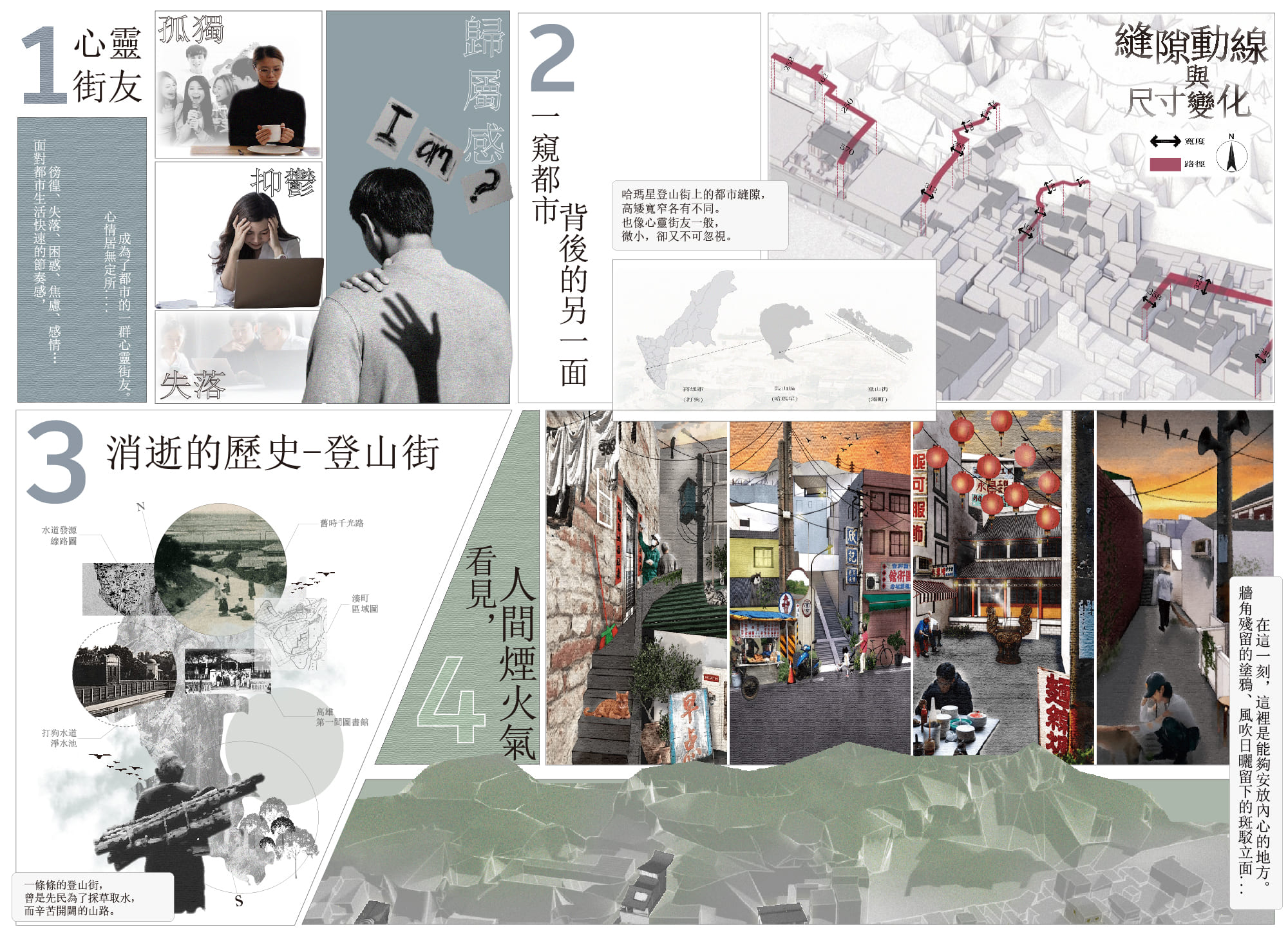
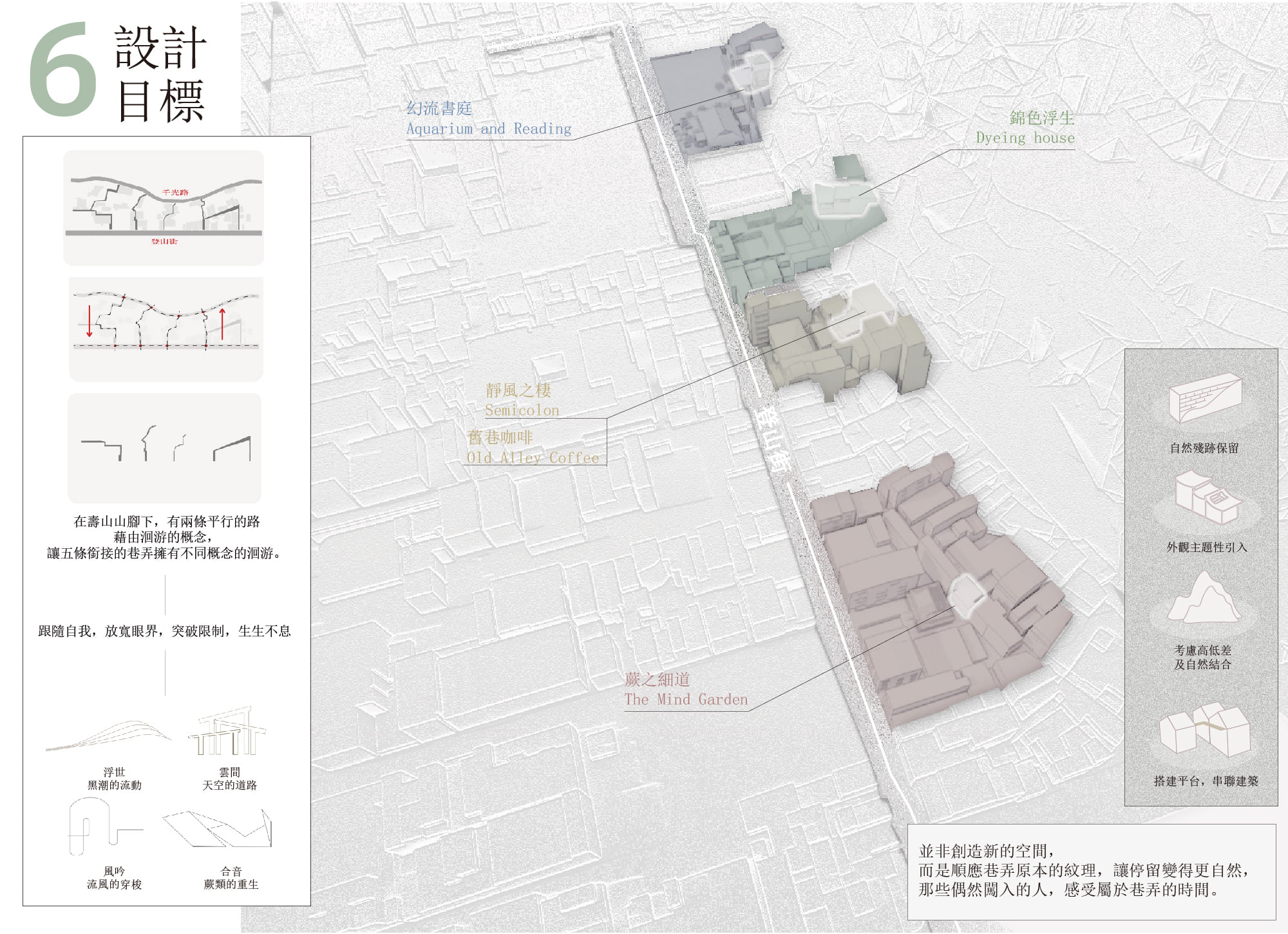
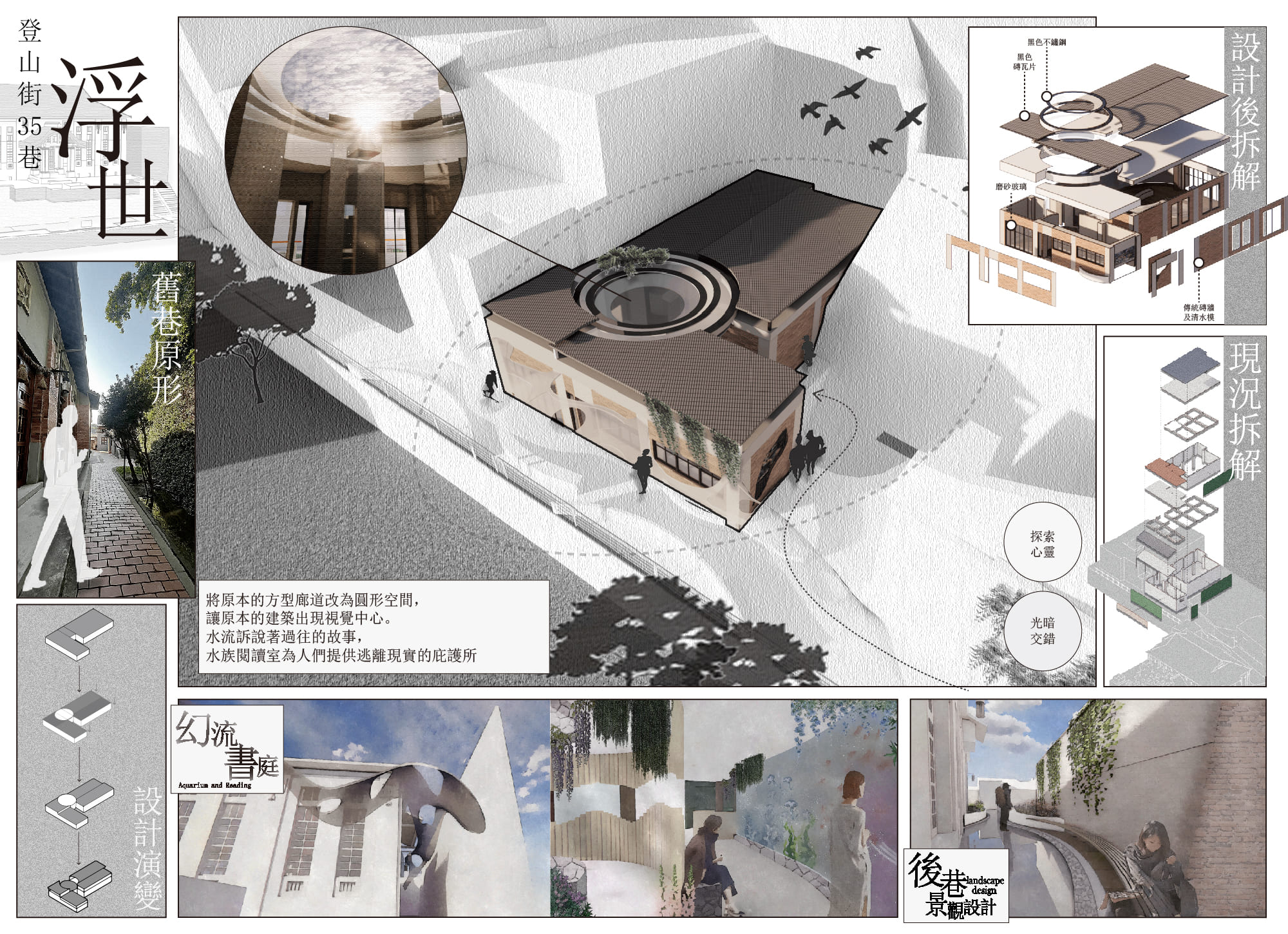
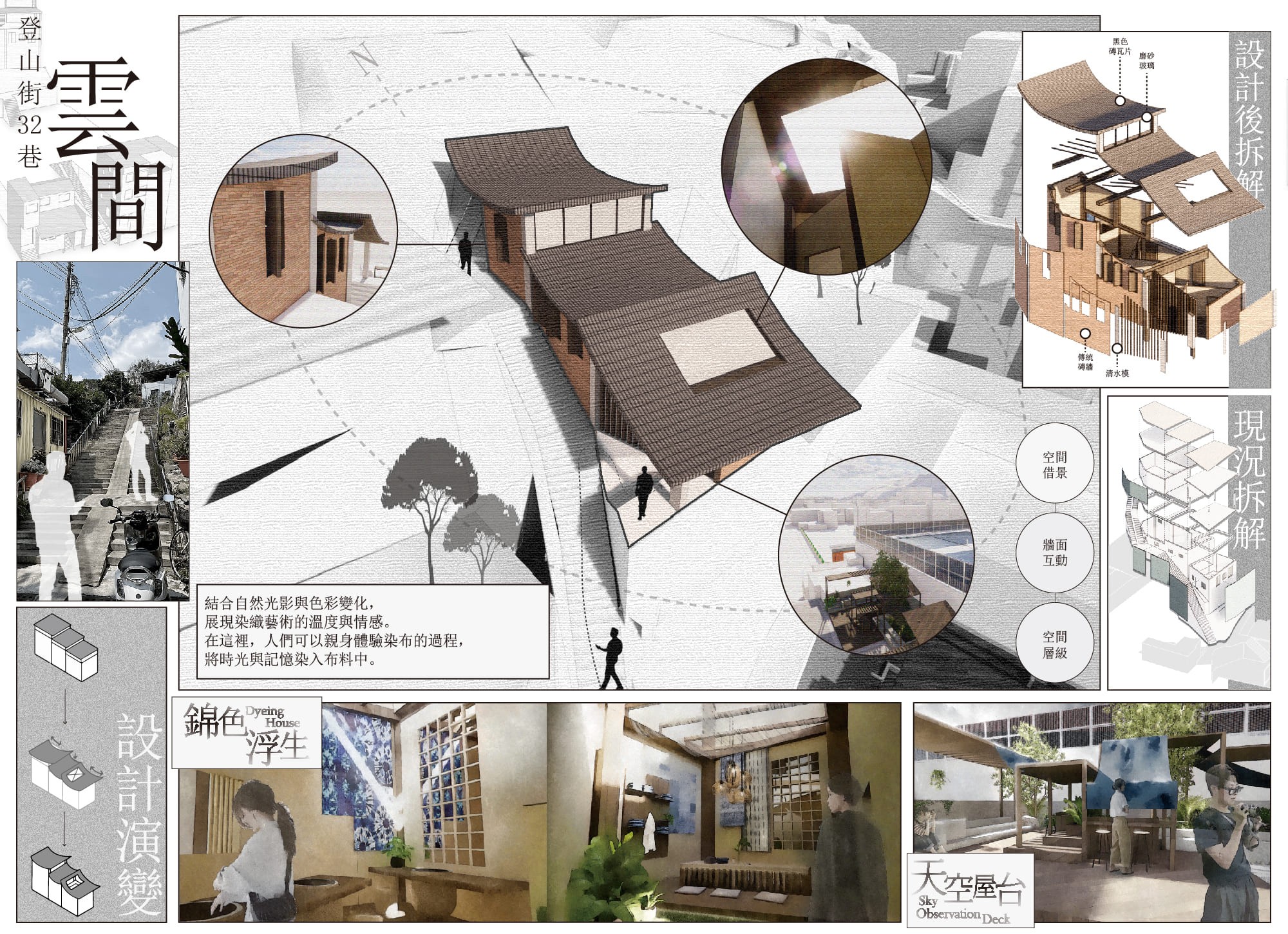
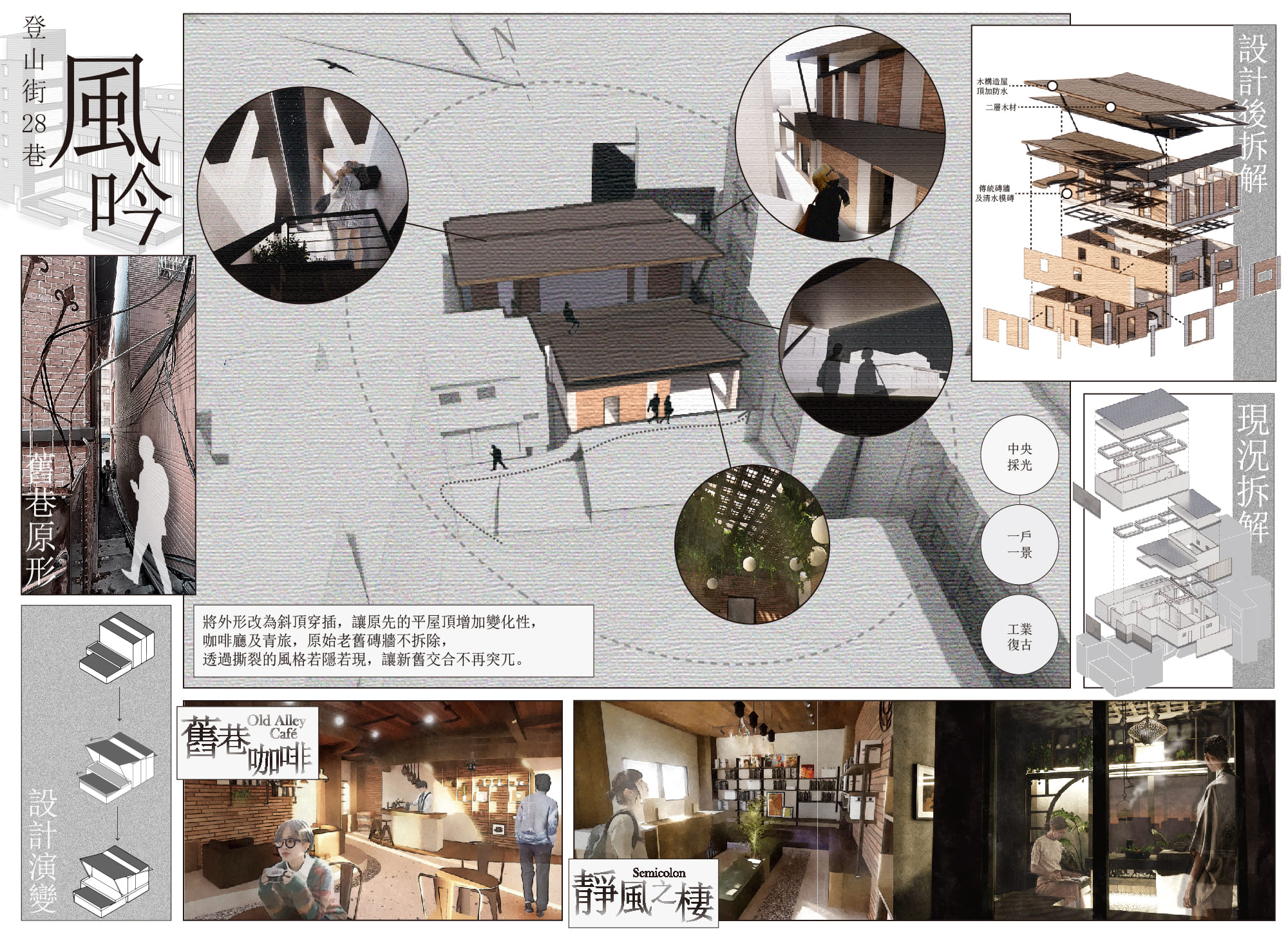
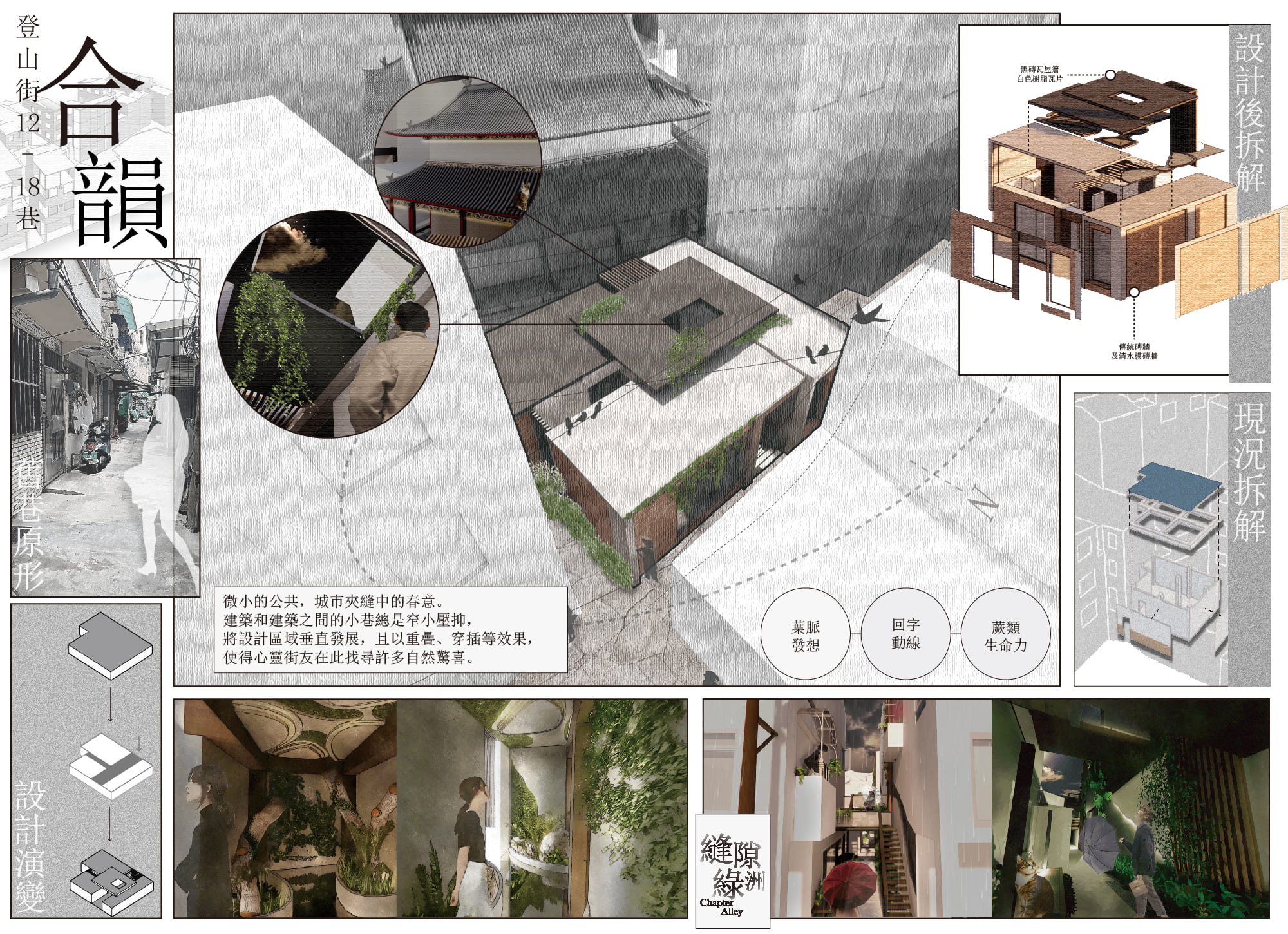
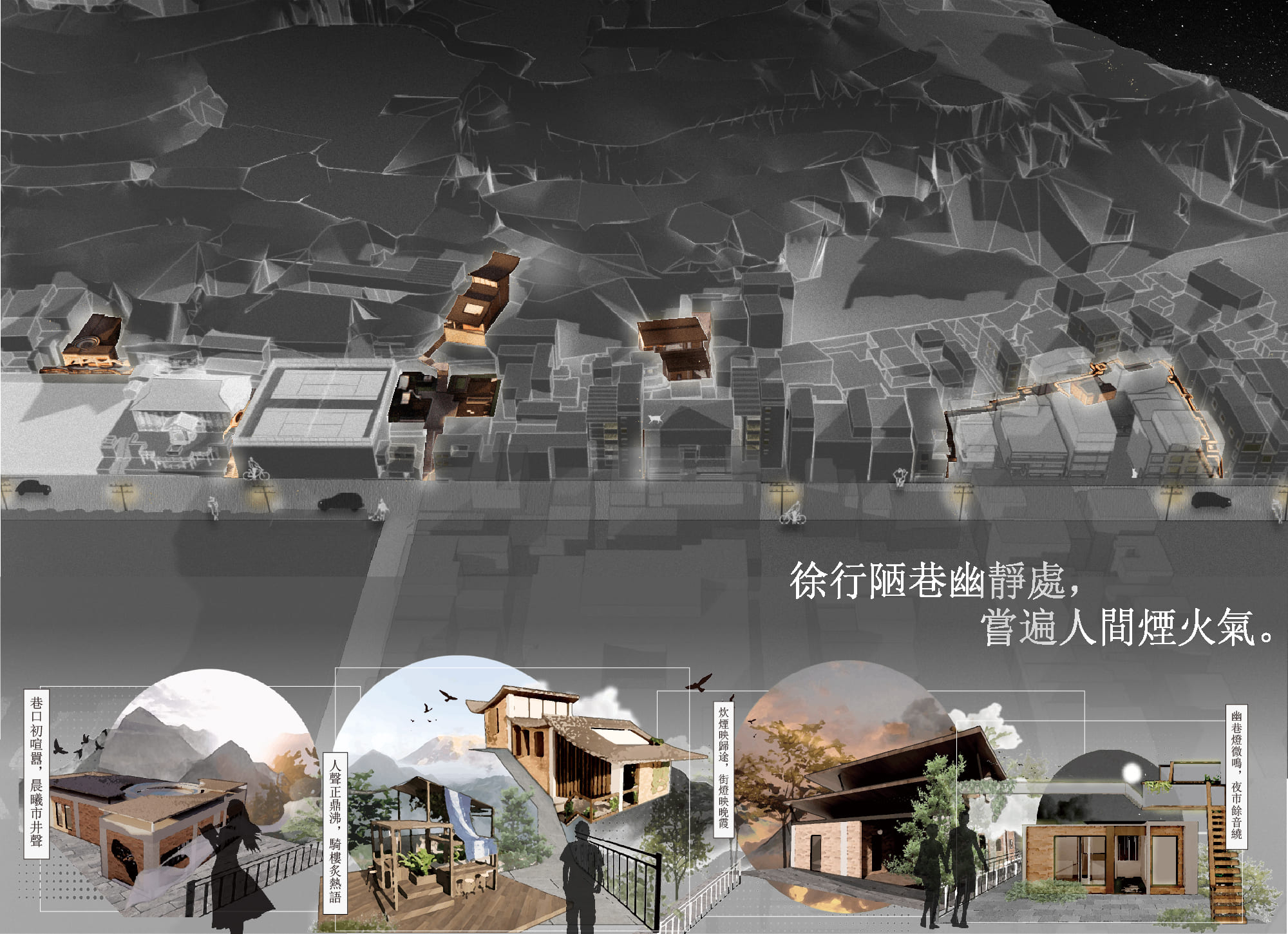
「城市縫隙」是都市發展中被忽視的空間,隱藏於狹窄巷弄與老街區,看似不起眼,卻蘊含深厚的文化與歷史意涵,走進一看,更能發現與都市不同的「人間煙火氣」,它們是社會變遷與人性流動的縮影,清晨的攤販叫賣聲、郵差送信的機車聲音、三五鄰居聚集於巷弄分享家常…這些邊緣地帶,成為「心靈街友」—那些因快節奏生活與情感空虛而感到孤獨的人的短暫棲息庇護所,他們或許並非無家可歸,卻因心理、精神或生活模式的選擇,遊走於這些被忽略的角落,尋找心靈慰藉,基地選在哈瑪星登山街,因地形起伏與建築間隙形成線性夾縫,串聯五條登山道,這些縫隙原為純粹的通行空間,卻擁有自由的可能性,並非創造新的空間,而是保有縫隙中的獨有紋理,選擇被忽略的角落和重點空間做為改造,並將人的行為與情感帶入,讓場域成為可被使用、可被記憶的場所,材質選擇上強調輕巧與適應性,使設施與時間共生,這樣的設計,不是填滿縫隙,而是保持開放,使人、環境與都市節奏交錯,最終讓這些微小的縫隙不再只是被忽略的餘白,而是能讓人短暫停留、交流,感受城市呼吸的場所—在山巷幽靜處,嘗遍人間煙火氣,聆聽風聲低語。
Cities always leave undefined gaps in the evolution of order and functionality. These spaces may be hidden among the skyscrapers or winding through the depths of alleyways, seemingly mere remnants of urban planning yet subtly becoming a hidden fabric within the city's fabric.
I am focused on how these marginal areas connect with people and transform from 'useless' into places of movement and shelter. The base is located on Hama Star Mountain Street, a linear gap formed by terrain variations and architectural gaps. Here are five hiking trails connected, once narrow spaces for passage but now possess the possibility of freedom due to unfilled areas—light penetrates, wind flows, and visitors can pause here to feel the city's pulse and natural changes.
These urban gaps are not just physical spaces but also reveal invisible cracks beneath social mechanisms—such as "Soul Drifters" those who exist outside of social structures but seek belonging in these marginalized areas. They may not be homeless, but they dwell in these unnoticed corners due to their mental, psychological, or lifestyle choices. Thus, these gaps became the interface through which they coexisted with the city, and also the entry point for my design.
Design strategies revolve around "penetration" and "translation," which allows light, wind, and greenery to enter and revitalize previously closed spaces, transforming areas into usable and memorable places through suspension walkways, modular devices, and flexible green walls. In terms of material selection, it also emphasizes lightness and adaptability, ensuring it does not become a rigid facility but can coexist with the flow of time. Such designs do not fill gaps but remain open, allowing people, the environment, and urban rhythms to intertwine. Ultimately, these tiny urban gaps are no longer mere afterglows but transform into transitional living spaces where visitors can briefly pause, interact, and feel the city's breath.